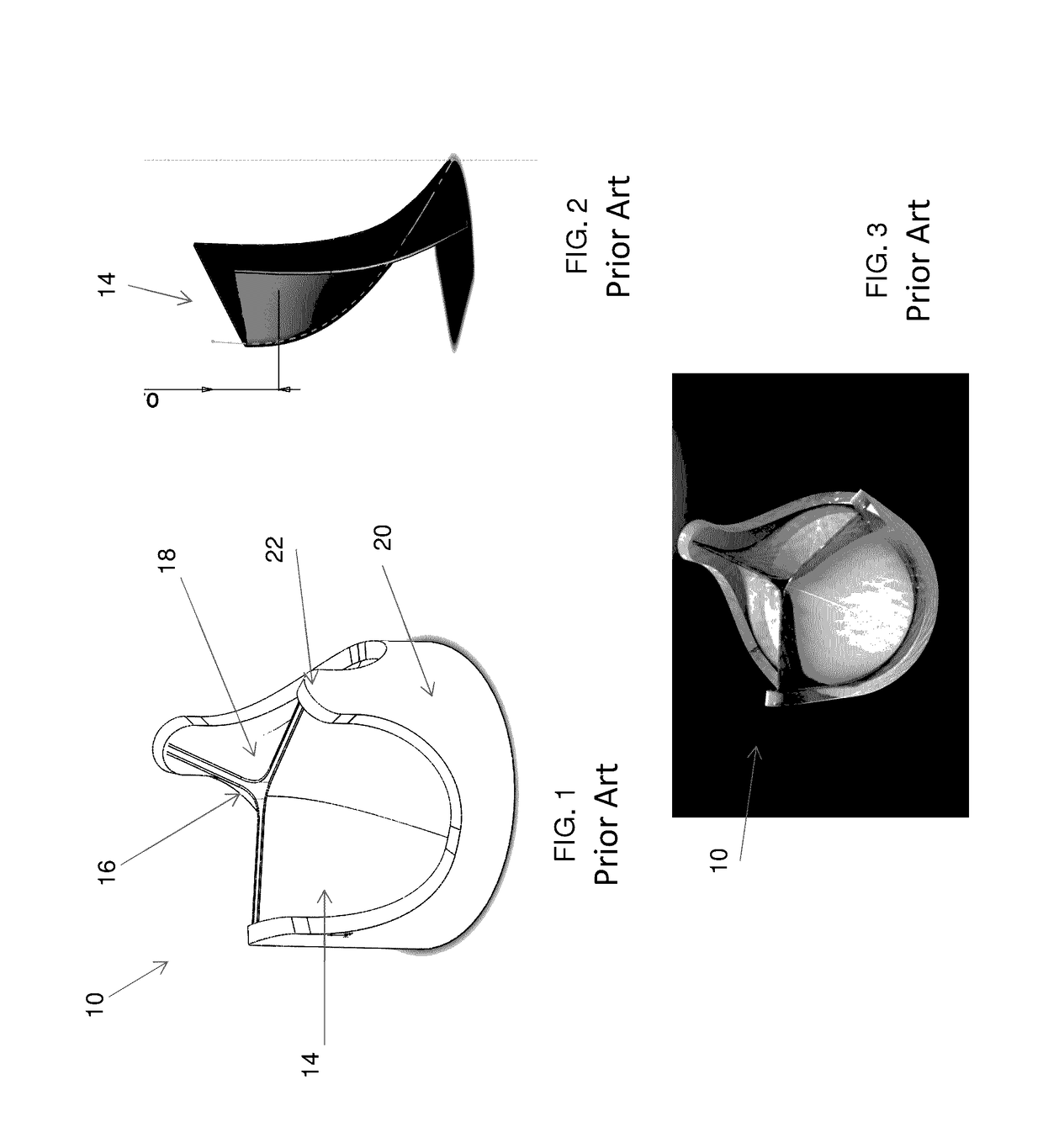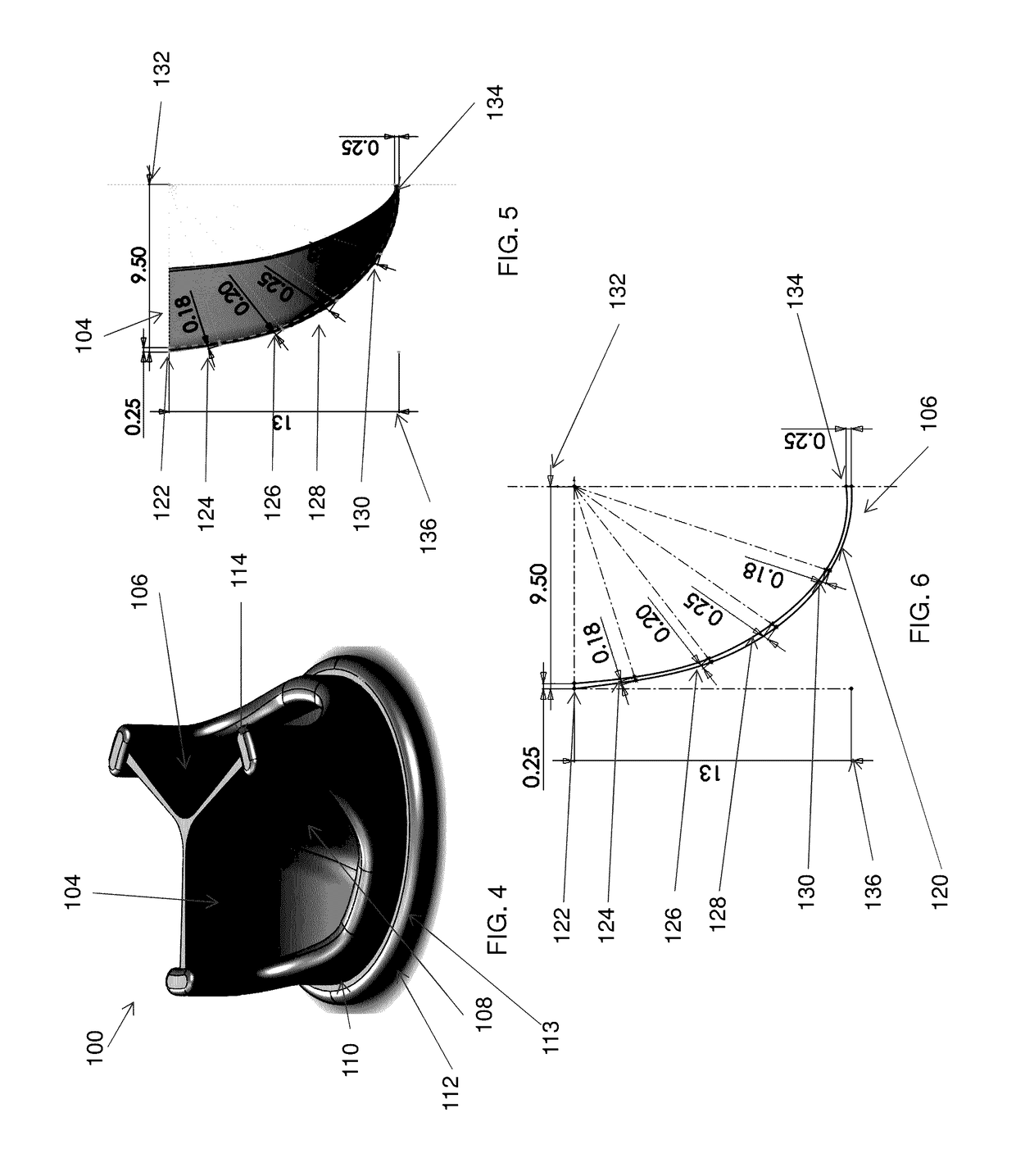Polymeric heart valve
a polymer and heart valve technology, applied in the field of implantable prosthetic heart valves, can solve the problems of unsatisfactory damage of the valve body, fatigue of the leaflet, and low tensile strength of the prior art polymer, so as to eliminate the need for animal tissue sourcing, improve durability, and eliminate the effect of any risks to patients
- Summary
- Abstract
- Description
- Claims
- Application Information
AI Technical Summary
Benefits of technology
Problems solved by technology
Method used
Image
Examples
example
[0050]Platelet thrombin generation rates were measured using a platelet activation state (PAS) assay. Results were compared measurements conducted with 21 mm Carpentier-Edwards Perimount Magna tissue valves mounted in the pulsatile LVAD and to a negative control, in which the LVAD was run without valves.
Bulk Human Platelet Activation Measurements
[0051]Platelet activation of the valves was measured using 120 ml of blood. A Berlin pulsatile left ventricular assist device (LVAD) was used to recirculate 250 ml of solution containing freshly isolated human platelets at a concentration of 20,000 / μl in platelet buffer. The system held two identical valves mounted inside custom designed valve holders oriented in opposite directions. The inflow and outflow ports were connected with a compliance reservoir. The pump rate was set to 90 BPM with a stroke volume of 65 ml, corresponding to a cardiac output (CO) of 5.85 l / min. The systole / diastole ratio was set to 0.375. The recirculation test was ...
PUM
 Login to View More
Login to View More Abstract
Description
Claims
Application Information
 Login to View More
Login to View More - R&D
- Intellectual Property
- Life Sciences
- Materials
- Tech Scout
- Unparalleled Data Quality
- Higher Quality Content
- 60% Fewer Hallucinations
Browse by: Latest US Patents, China's latest patents, Technical Efficacy Thesaurus, Application Domain, Technology Topic, Popular Technical Reports.
© 2025 PatSnap. All rights reserved.Legal|Privacy policy|Modern Slavery Act Transparency Statement|Sitemap|About US| Contact US: help@patsnap.com



